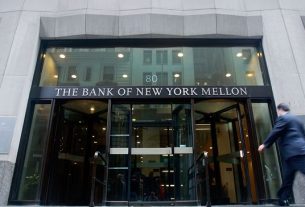|
Getting your Trinity Audio player ready...
|
The growth of India’s fintech industry has historically been driven by burgeoning digital payments, but now digital credit is poised to take the reins. In 2022, estimates valued India’s digital lending market at around USD 270 billion with projected growth of 500% by 2030, reaching USD 1.3 trillion. But what is digital credit, and how can its regulation help narrow the credit gap for India’s nearly 63 million Micro and Small Enterprises (MSEs)?
Digital lending can be broadly understood as the use of digital technologies in the process of providing credit – from assessment, approval, and disbursement to repayment and customer service, including the use of alternative data, algorithms, and accessing credit intermediation services in digitally-enabled ways. According to our landscape analysis across developing economies, fintech models employing these technologies have the potential to offer responsible financial services at scale to previously excluded and underserved MSEs.
Market opportunities to serve credit-constrained MSEs are abundant
A Reserve Bank of India (RBI) study found that although digital credit remains a small part of the overall formal credit portfolio in the country (between 2 -10%), it is growing at an explosive pace, with the volume of loans disbursed digitally increasing twelve-fold between 2017 and 2020. Nearly half of these were personal loans, and around a third comprised small business and consumer finance loans, including Buy Now Pay Later (BNPL) products.
This is consistent with findings from CGAP’s research on the evolution of MSE finance markets in the digital age in five emerging economies, including India. The results show that while fintechs provided only 4.2% of the USD 532 billion disbursed as consumer credit to low-income borrowers and a mere 0.1% of the USD 187 billion disbursed as credit to MSEs in India, they are emerging as a significant source of credit, especially for low-income households. New digital credit models like BNPL account for as much as 15% of the volume of credit disbursed to low-income customers and MSEs.
This rampant increase in retail consumption finance is driven by strong credit demand from young borrowers – mostly male, under the age of 35, in semi-urban areas, many of whom are new to credit, with an average loan size of under $200. This profile is similar to that of many MSE borrowers and includes MSE owners who may be taking credit in their individual capacity. Non-Banking Financial Companies (NBFCs), who operate under a flexible regulatory regime are spearheading this growth in partnership with fintechs (digital lending apps or platforms) – in 2021, 60% of all loans made by NBFCs were through digital lending apps, compared to only 23% in 2019.
While it is concentrated on consumer finance today, a rapidly expanding digital credit sector is a welcome development for India’s MSEs, most of whom are credit-constrained. Less than half of the overall credit demand from MSEs in India is being met by formal sources – overwhelmingly banks and NBFCs – and even these loans are accessible only to larger, more formal, and urban MSEs. In India, increased digital adoption by small businesses during the pandemic, a combined unmet credit demand of nearly USD 500 billion, a thriving digital payments industry and open digital infrastructure create market opportunities for fintechs to provide digital credit to MSEs.
But optimism without regulatory safeguards can be a blind spot exposing vulnerable customers to risks
Unfortunately for many Indians, easy credit from unregulated fintech providers during times of economic distress has turned out to be a recipe for disaster involving incidents of exorbitant interest rates, fraud, scams, and unethical practices such as harassment, bullying, extortion, and blackmail, leading several people to die by suicide. The RBI found that more than half of the 1,100 digital lending applications operational between January 2020 and February 2021 were unregistered and illegal. With no comprehensive laws on data protection, cybercrime, or a regulatory framework for digital lending, law enforcement authorities struggled to effectively address and prevent fraudulent activity by unscrupulous lenders.
RBI’s new guidelines herald regulatory clarity to digital lending
In response to growing fraud and customer complaints, the RBI has since released guidelines on digital lending to increase transparency, protect customers, and prevent unethical recovery practices. These guidelines are applicable to all RBI-regulated banks and NBFCs effective November 30, 2022, and cover several aspects related to the lending process. Some important changes include:
- All fund-flows related to disbursal and repayment of digital credit should only be executed between bank accounts of borrowers and lenders, without the involvement of any third-party Loan Service Providers (LSPs).
- Any fees collected by third-party LSPs can no longer be passed on to borrowers and must be borne by lenders.
- Automatic credit releases are no longer allowed. Lenders should seek express consent from customers for each increase in credit limit.
- Lenders must mandatorily provide standardized Key Facts Statement (KFS), disclose all-inclusive costs as Annual Percentage Rate (APR), provide cooling-off/ look-up period to exit loans without penalty, publish lists of fintech partners and recovery agents, report digital loans to credit bureaus, and have dedicated grievance mechanisms.
- Lenders are also responsible for data protection and privacy – including data collected by their LSPs and fintech partners. The latter are also prohibited from accessing any customer phone data such as media, call logs, contact lists, camera, and microphone etc. (other than for know your customer (KYC) data) and storing any biometric customer data on their systems.
In an earlier communication, the RBI also prohibited non-bank fintech providers from using their prepaid instruments like e-wallets and prepaid cards to extend credit, tightening rules around BNPL or ‘on-demand’ credit products.
New guidelines can help position digital credit as trustworthy and responsible for MSEs
CGAP’s research with MSEs in India finds that concerns around privacy, use of their data, transparency, lack of grievance redressal mechanisms and providers’ unethical conduct are key barriers to the adoption of digital credit. Even isolated incidents of fraud, malpractice or data breaches can rapidly erode trust amongst MSEs and affect usage, including in their social networks. MSEs rarely seek formal credit but when they do, they have an overwhelming preference for transacting with banks and NBFCs because they are regulated entities.
It is in this context that RBI’s digital lending guidelines emerge as fundamentally important to tech-enabled MSE finance, placing greater control in the hands of customers and demanding greater accountability from providers. They can help foster greater trust among MSEs in the system through increased safeguards for transparency, data protection and market conduct. And for fintechs, they offer greater regulatory clarity on permissible activities and business models, incentivizing long-term investments from earnest providers.
A comprehensive framework is essential for effectively regulating digital credit
The RBI’s recent guidelines are an important first step towards a responsible digital credit market, but to fully realize the promise of fintech for financing MSEs, more comprehensive regulatory and legal frameworks are necessary. The complexity of business models, rapidly advancing technologies, the overlap of several sectors, and the unique challenges faced by MSEs complicate efforts – and often incentivize piecemeal solutions – to regulate fintech business models, creating regulatory arbitrage in an already fragmented landscape.
But this is hardly unique to India. With the proliferation of digital lending models in emerging markets worldwide, it is important to develop from first principles, a global perspective of an enabling regulatory environment for MSE fintech business models that can balance risks and innovation. Moreover, in the absence of international consensus, countries have embraced varied and divergent regulatory approaches to fintech. There is an urgent need for financial inclusion funders, sector support organizations and regulators to make sense of this landscape, articulate a vision of responsible digital credit ecosystems, and embrace harmonized regulatory approaches to achieve that vision.



